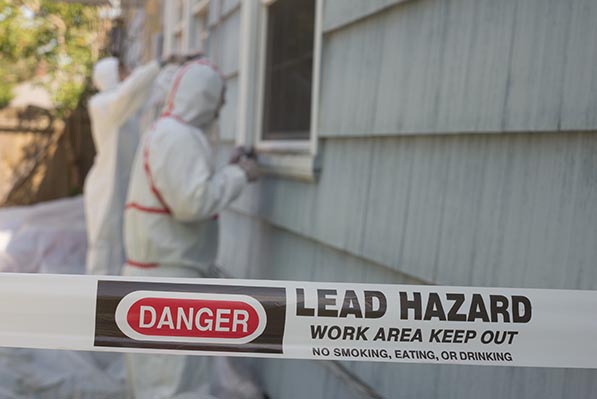What changes has Cal/OSHA made to its standard for exposure to lead in construction and other industries?
The Division of Occupational Safety and Health (Cal/OSHA) and the Occupational Safety and Health Standards Board (OSHSB) have made extensive revisions to the standard for lead exposure in the Construction and General Industry Safety Orders. The new regulations will take effect on January 1, 2025.
Existing regulations had established enforcement criteria for permissive lead exposure contained in Section 1532.1 of the Construction Safety Orders (CSO) and Sections 5155 and 5198 of the General Industry Safety Orders (GISO).
Existing requirements in these sections are based on lead toxicity information and medical and epidemiological data that is now 40 years old. Current evidence demonstrates that even at exposure levels well below those currently allowed by the existing regulations, harmful health effects can occur.
Revision Process
Pursuant to recommendations submitted to Cal/OSHA by the California Department of Public Health in 2010 and 2013 to revise the lead standards, Cal/OSHA initiated six advisory committees consisting of the affected stakeholders.
In addition, in June 2019, Senate Bill (SB) 83 amended the Labor Code, creating new Section 6717.5. The amendment required Cal/OSHA to submit to the OSHSB a rulemaking proposal to revise the lead standards in the CSO and GISO, consistent with scientific research and findings.
The new standards are comprehensive and revise virtually all permissible exposure limits (PEL), time-weighted averages (TWA), blood lead levels (BLLs) and modify testing requirements for zinc protoporphyrin (ZPP).
Sample of Revisions
Following is just a limited example of the many revisions that have been made.
For Construction Safety Orders, Section 1532.1, Lead:
- Lowering an action level that triggers certain protective measures from 30 to 2 micrograms of lead per cubic meter. (The same change was made in Section 5198 of the General Industry Safety Orders.)
- New definitions for items such as a “Level 1 trigger task,” “Level 2 trigger task,” “Level 3 trigger task” and “trigger task-not listed.”
- Reducing the duration of specified work that triggers the requirement to implement medical surveillance.
- Establish general hygiene requirements when employees have occupational exposure to lead, rather than exposure to lead above the PEL. (The same change was made in Section 5198.)
- Lowering the PEL for lead, calculated as an 8-hour time-weighted average (TWA), from 50 micrograms/cubic meters of air to 10. (The same change was made in Section 5198.)
For General Industry Safety Orders, Section 5155, Airborne Contaminants:
- Lower the PEL for lead (metallic) and inorganic compounds, dust and fume, as Pb (lead) calculated as an 8-hour TWA, from 0.05 to 0.01 micrograms per cubic meter of air.
- Lower the PEL for lead chromate, as Pb (lead) from 0.02 to 0.01 micrograms per cubic meter of air.
For General Industry Safety Orders, Section 5198, Lead:
- Adding and defining the terms “altering or disturbing,” “blood level” and “high efficiency particulate air (HEPA)” filter.
- Adding and defining the term “presumed significant lead work (PSLW).”
- Requiring respiratory protection, protective clothing and equipment, medical surveillance, training, and warning signs for lead, when employees perform PSLW.
- Lowering the BLL at which specified employees must be offered medical examinations and consultations at least annually from 40 to 20 micrograms per cubic meter of air.
- Increasing the frequency of BLL testing when their BLL is at or above 10 micrograms per deciliter and requiring a response plan when an employee’s BLL is at or above 10 micrograms per deciliter.
Standards Board Documents
View the revised lead standard as approved by the Office of Administrative Law (OAL).
The regulatory history, approved standard and other documents are available on the OSHSB website.
Mel Davis, Workplace Safety Expert, CalChamber
CalChamber members can read more about Creating a Workplace Safety Plan in the HR Library. Not a member? Learn how to power your business with a CalChamber membership.


